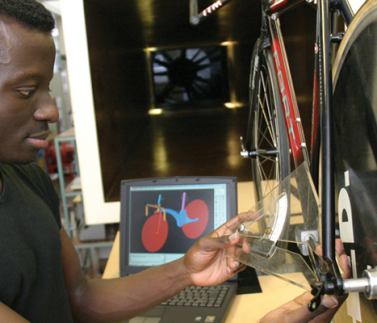
Embracing the future of learning and teaching
The higher education sector has done brilliantly well to fast-track the technical support needed for staff and sudents to work and study remotely since the nationwide lock-down began in the wake of the COVID-19 pandemic.
Universities have learned a lot from delivering this ’emergency’ technology-enabled learning, teaching, and assessment, and will be putting those lessons to good use ahead of the new academic year. But now is the moment to look beyond September 2020. Let’s use this knowledge and new-found technological confidence to identify the methods that are working best, and expand and build on them for 2021–22 and beyond.
While I applaud the huge effort the sector has made in the face of the pandemic, there is of course a difference between quick-fix tools like Zoom and Teams that enable remote working, and the design and implementation of a digital-first curriculum. Although some universities have already made progress in this regard, those that get left behind will find it harder to compete in a system where student choice is ever more important.
I’m not suggesting that every course could or should be delivered online – that would never work for sports or arts students, for example. Connectivity issues and the impact on disadvantaged students of the additional data-costs associated with remote, online study also need to be considered.
But there’s certainly a case for a range of delivery modes, which can only broaden appeal. A hybrid, blended learning model may work for courses where practical elements are crucial, but other subjects could be covered completely online, appealing to those students who might find a campus existence difficult because of a disability, mental health issue, or financial reasons.
Sector leaders now have an unprecedented opportunity to reshape the entire higher education experience for staff and students.
By developing a strategic plan to embed technological practice effectively and sustainably at scale, universities can build a solid base to thrive in future.
This is why Jisc, the UK’s education and research edtech not-for-profit, is working with sector bodies, university leaders and student representatives to bring about a digital shift in higher education for 2020–21 and beyond. We are calling this programme, ‘Learning and Teaching Re-imagined’.
Our aim is to bring the sector together and use the collective experience gained during lockdown to set out a roadmap for the use of digital technologies, both to deliver an outstanding and inclusive education experience, and to best prepare students for the workplace of tomorrow.
Learning and Teaching Re-imagined has the strength and reach of three key sector bodies as partners with Jisc: UUK brings the power of the collective voice of all the universities across the four nations; our teaching and learning partner Advance HE is doing valuable work on the collective learning, sharing and planning needed to redefine the sector post-coronavirus; and Emerge Education brings in-depth knowledge and insights from the vibrant and innovative edtech ecosystem.
A number of university leaders have already joined this group and we welcome input from as many others as possible. As the opinions of learners are equally valuable, we have also invited student bodies to the group.
Together we hope to create a vision for UK higher education as a world-leader in technology-enabled learning.
To get us underway we have set up a programme of UK-wide online events taking place between June and October 2020, to address the most pressing questions.
The first webinar will take place on 17 June, and by the end of the programme, we will have produced a roadmap outlining a plan for the future of teaching and learning in a digital age.



